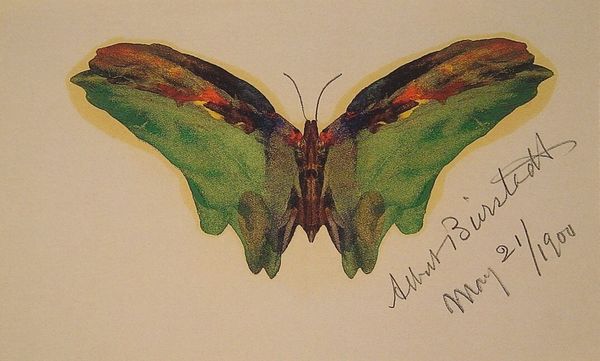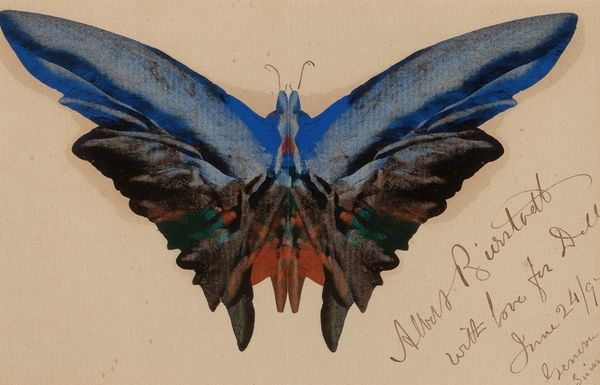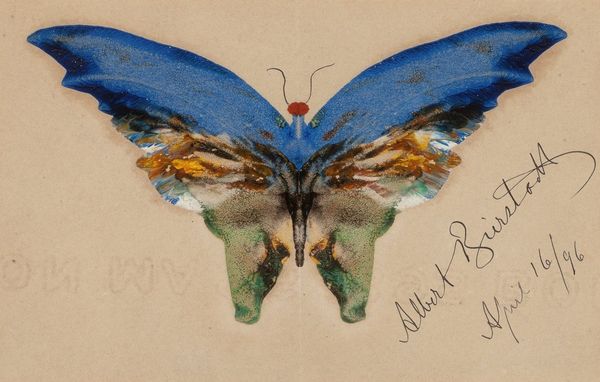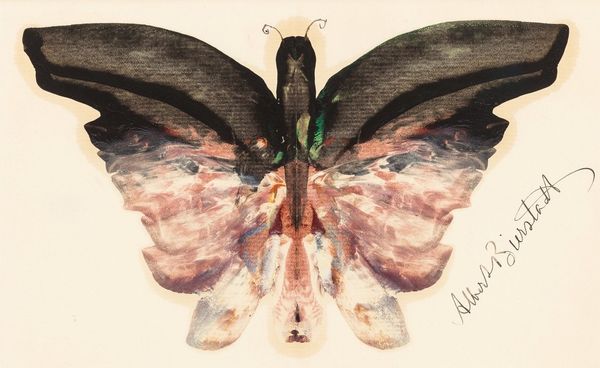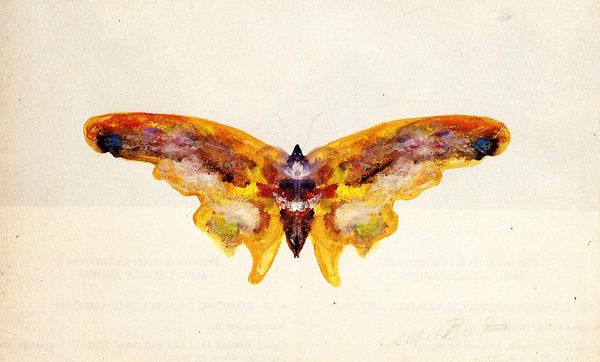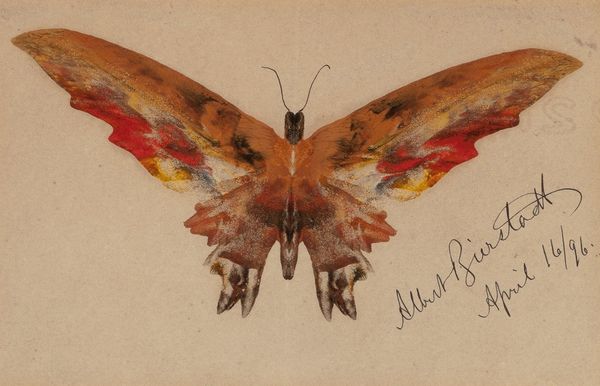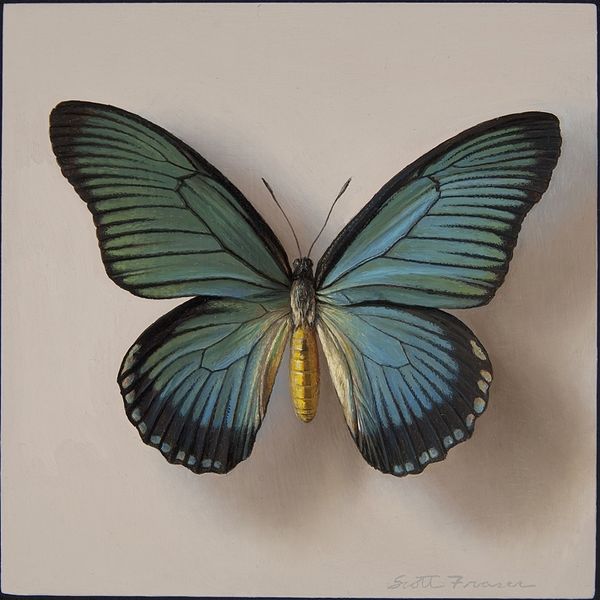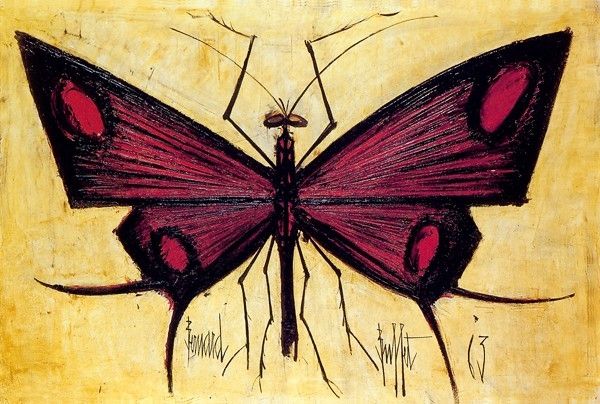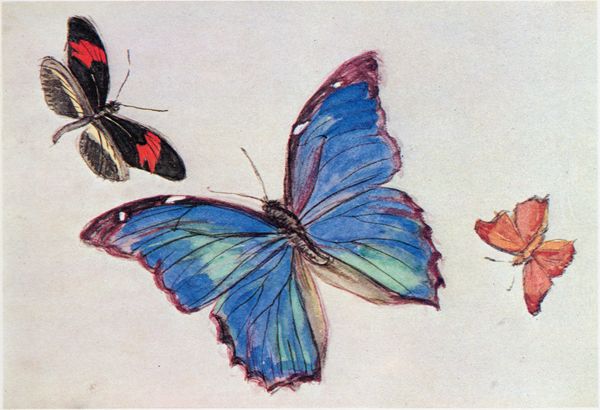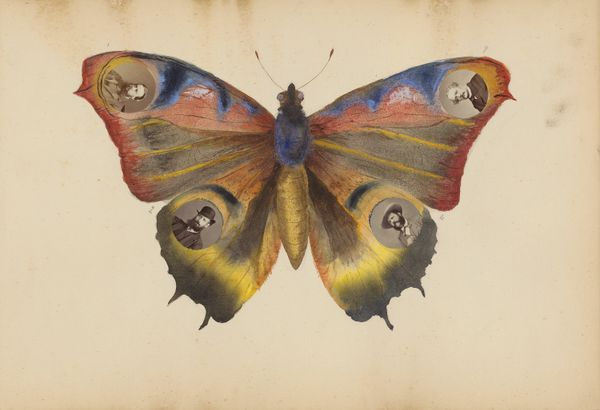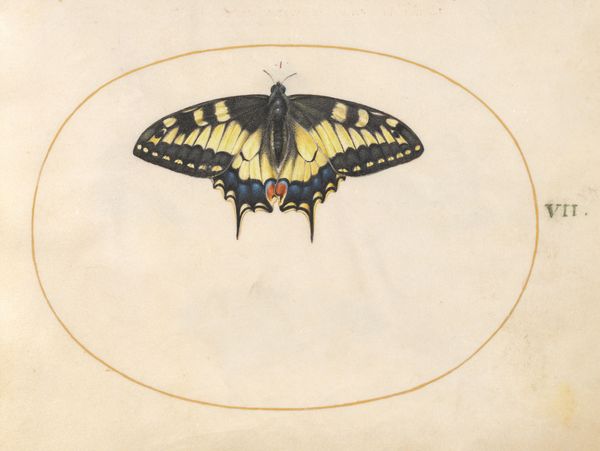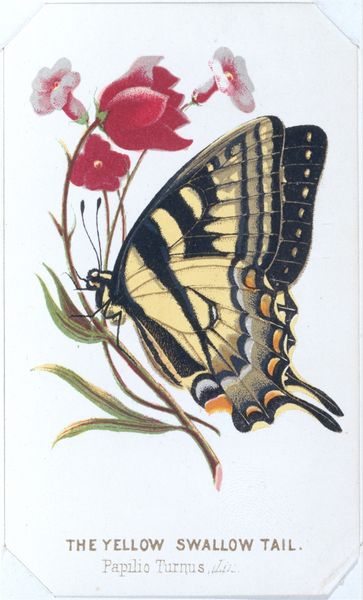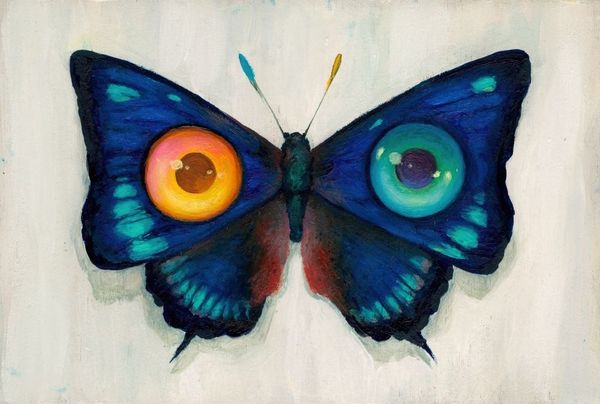
Dimensions: 12.7 x 20.3 cm
Copyright: Public domain
Albert Bierstadt created this small painting, "Butterfly (second version)," sometime around 1900. Bierstadt was one of the most successful painters of the American West. This image of a butterfly deviates from his monumental landscapes. The butterfly acts as a natural symbol, a suggestion of beauty, fragility, and transformation. At the time Bierstadt painted this, the United States was experiencing unprecedented industrialization. Think of the labor movements, and the concentration of wealth. This historical context re-frames the painting, which may also suggest an escape from the harsh realities of industrialized life and a longing for an idealized, pre-industrial past. The butterfly then, becomes more than just a symbol of natural beauty. It represents the changing American identity, caught between industrial progress and a longing for a simpler, more agrarian past. It's a visual echo of the tensions inherent in a nation grappling with its own transformation.
Comments
No comments
Be the first to comment and join the conversation on the ultimate creative platform.
